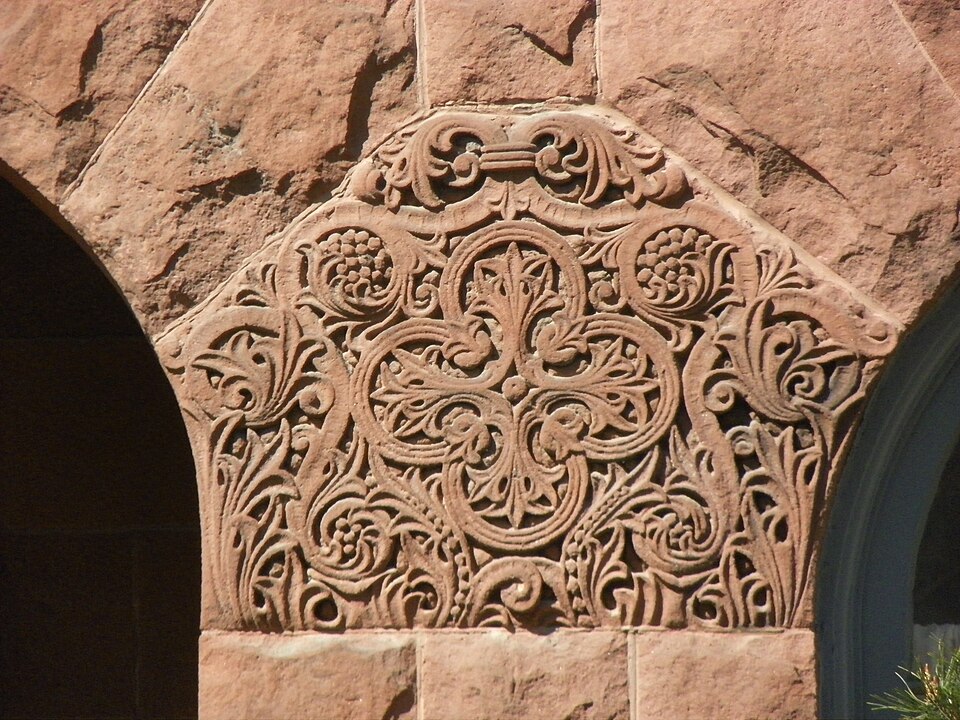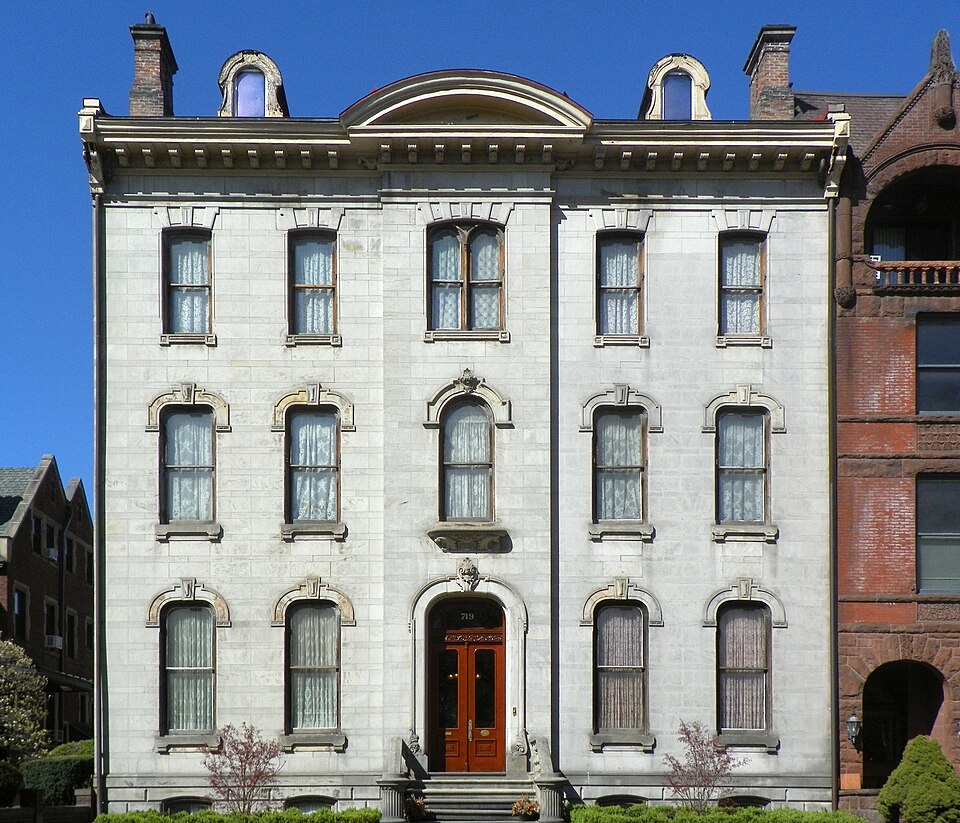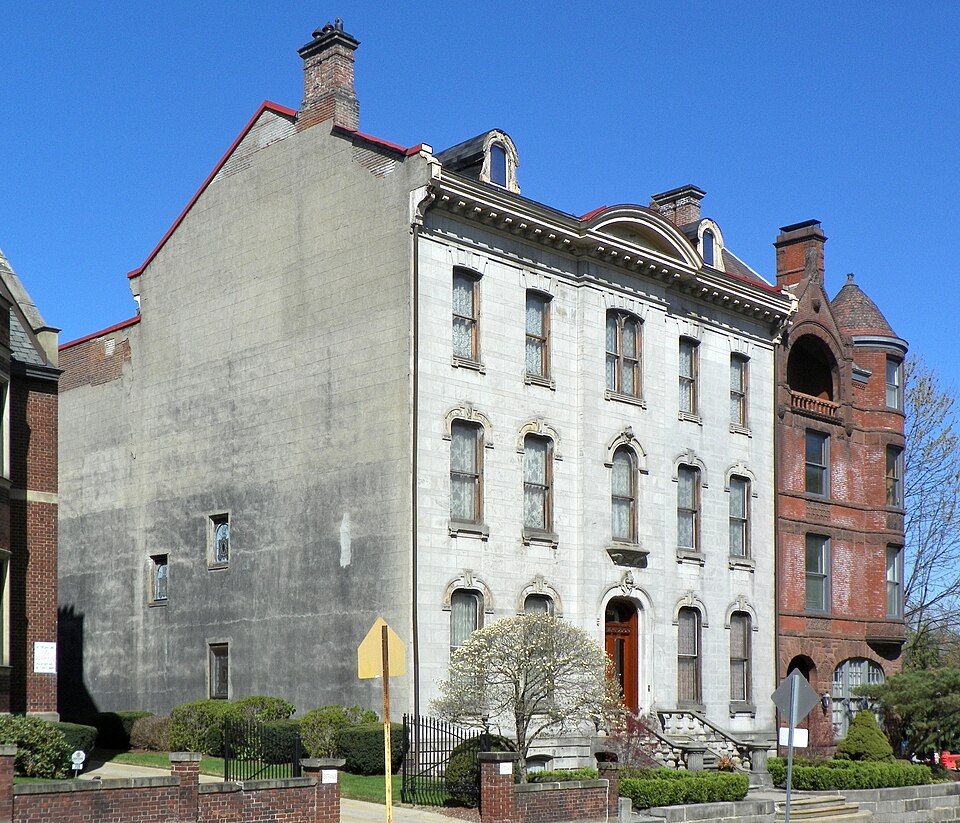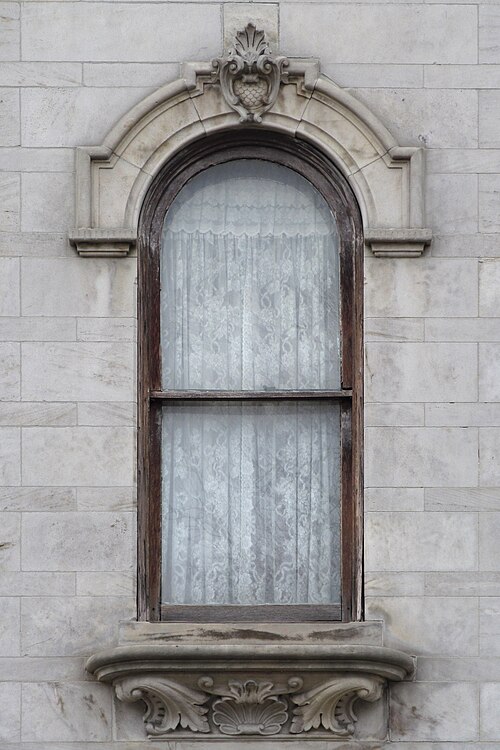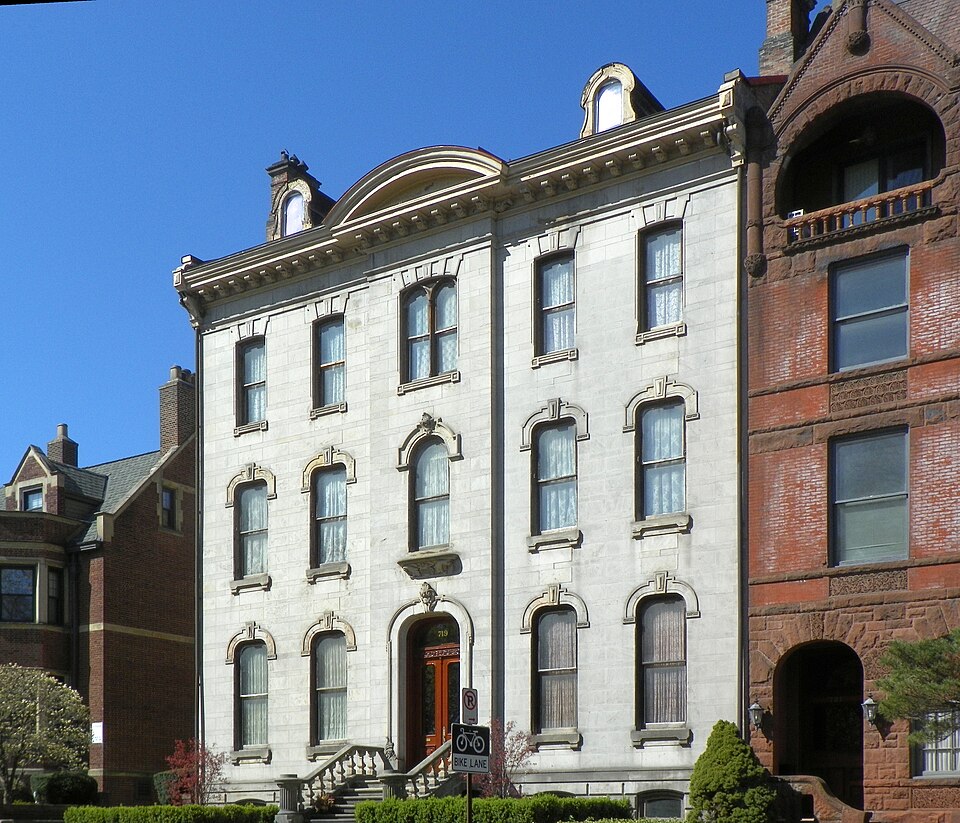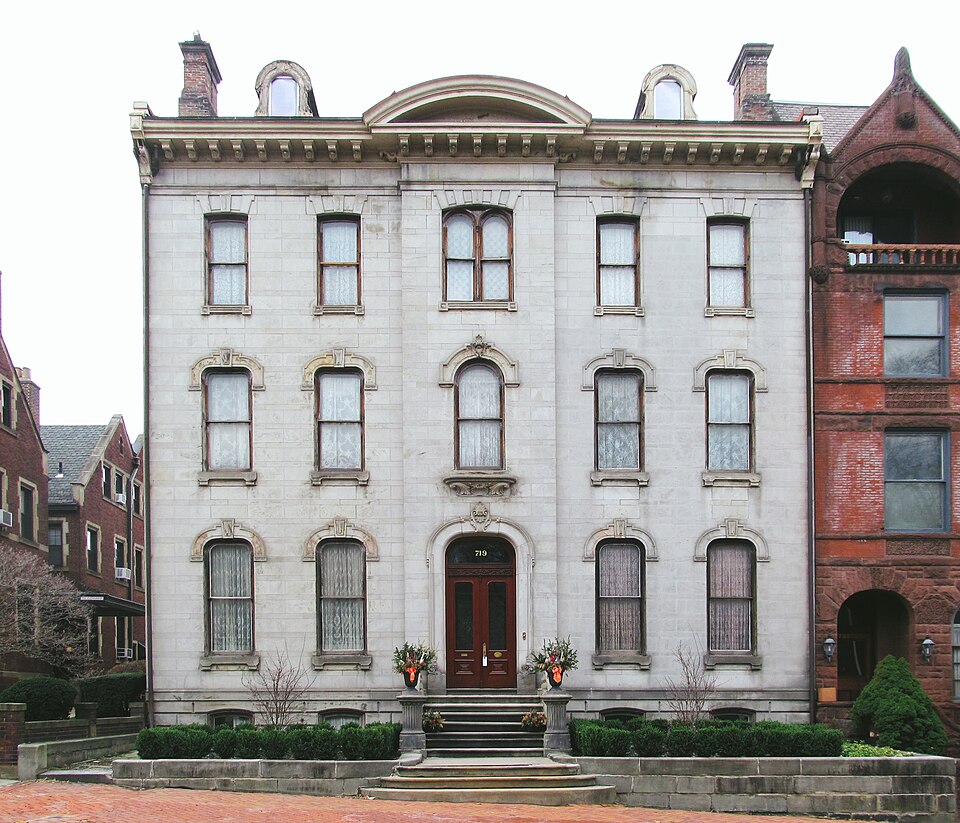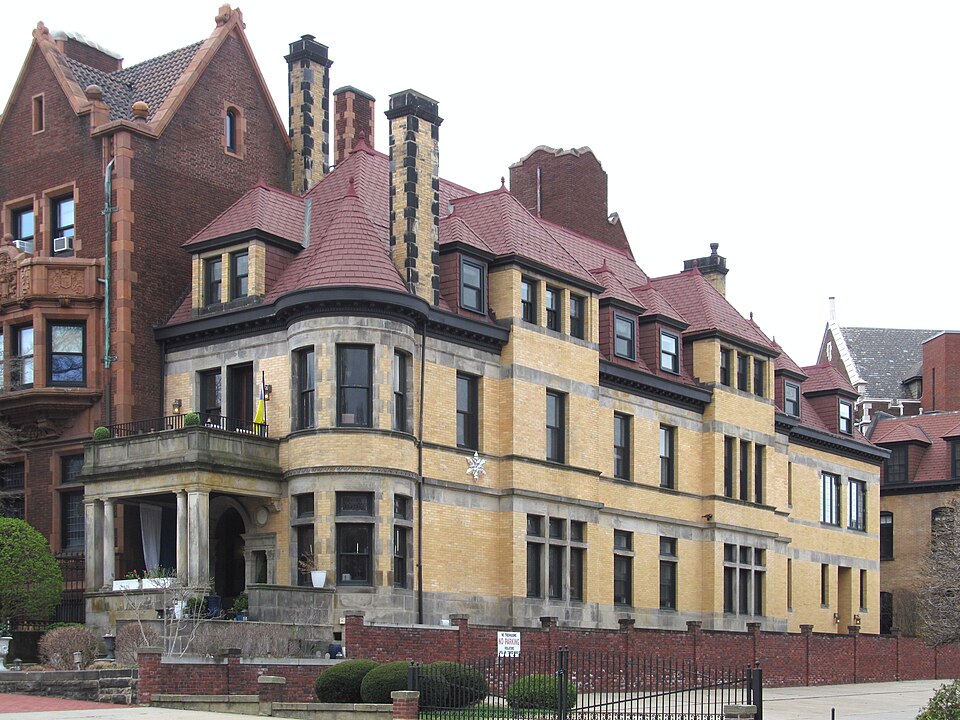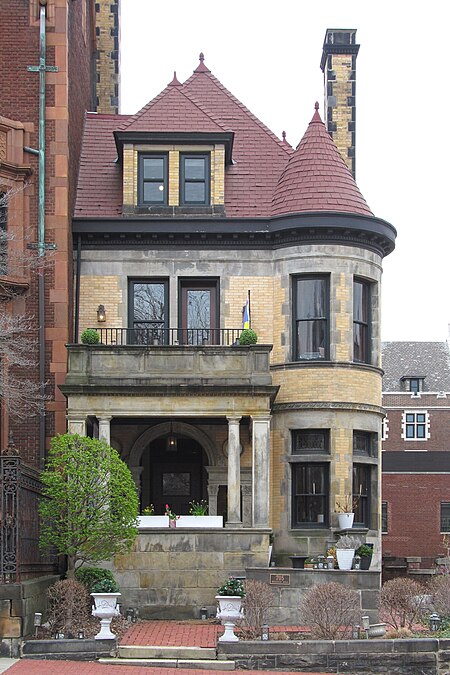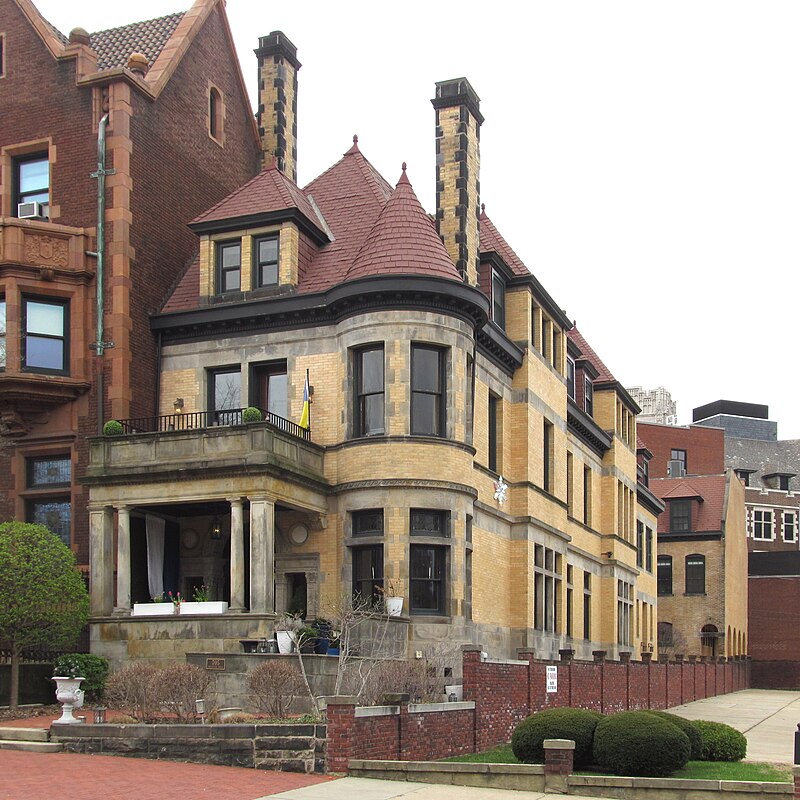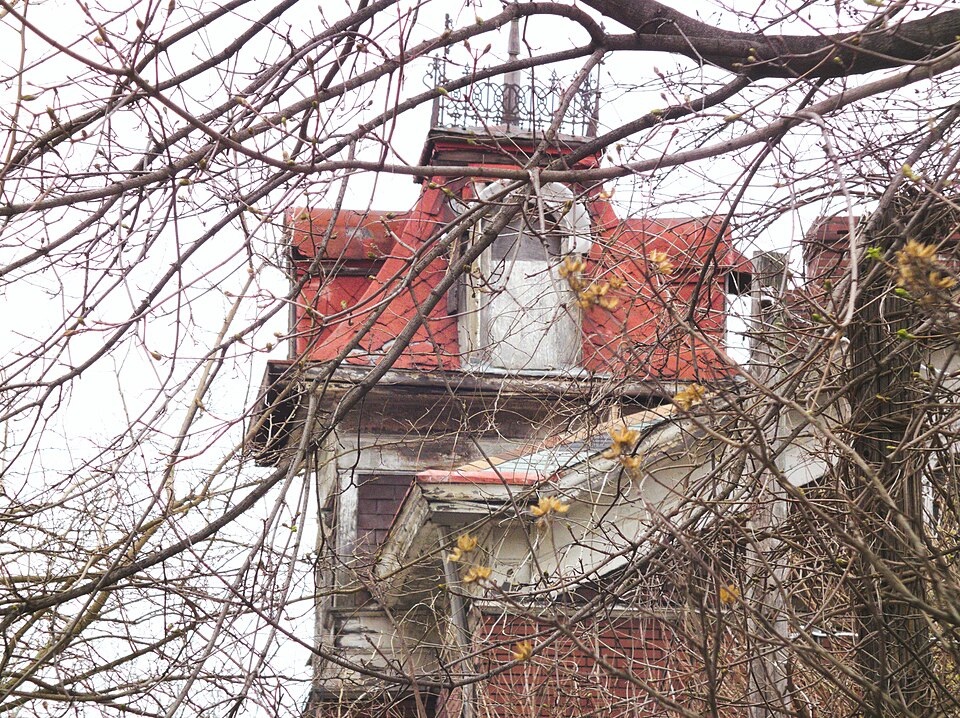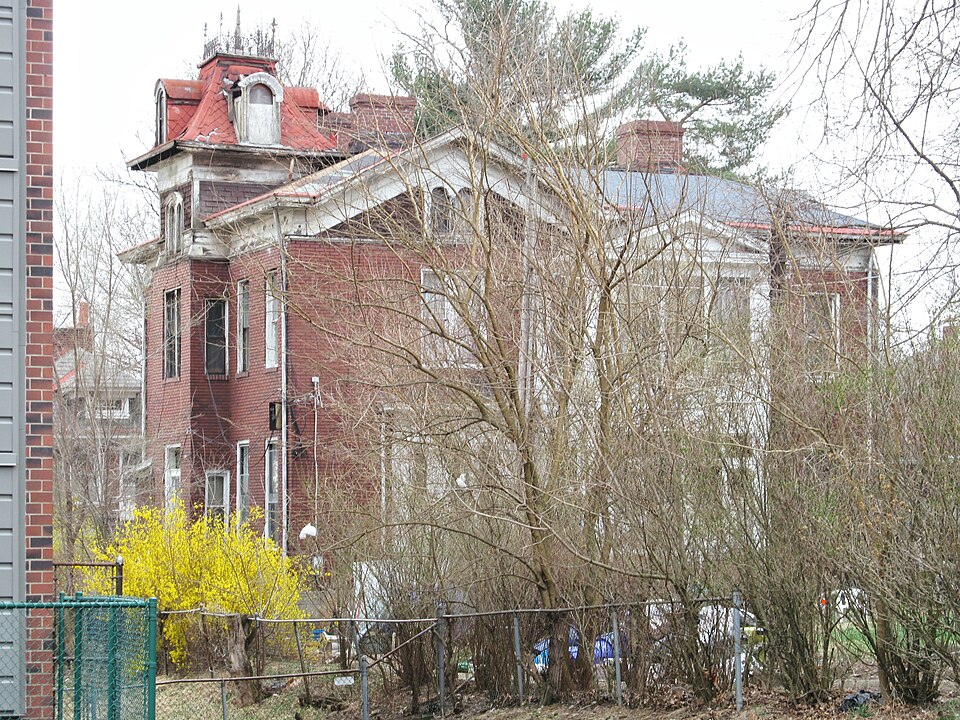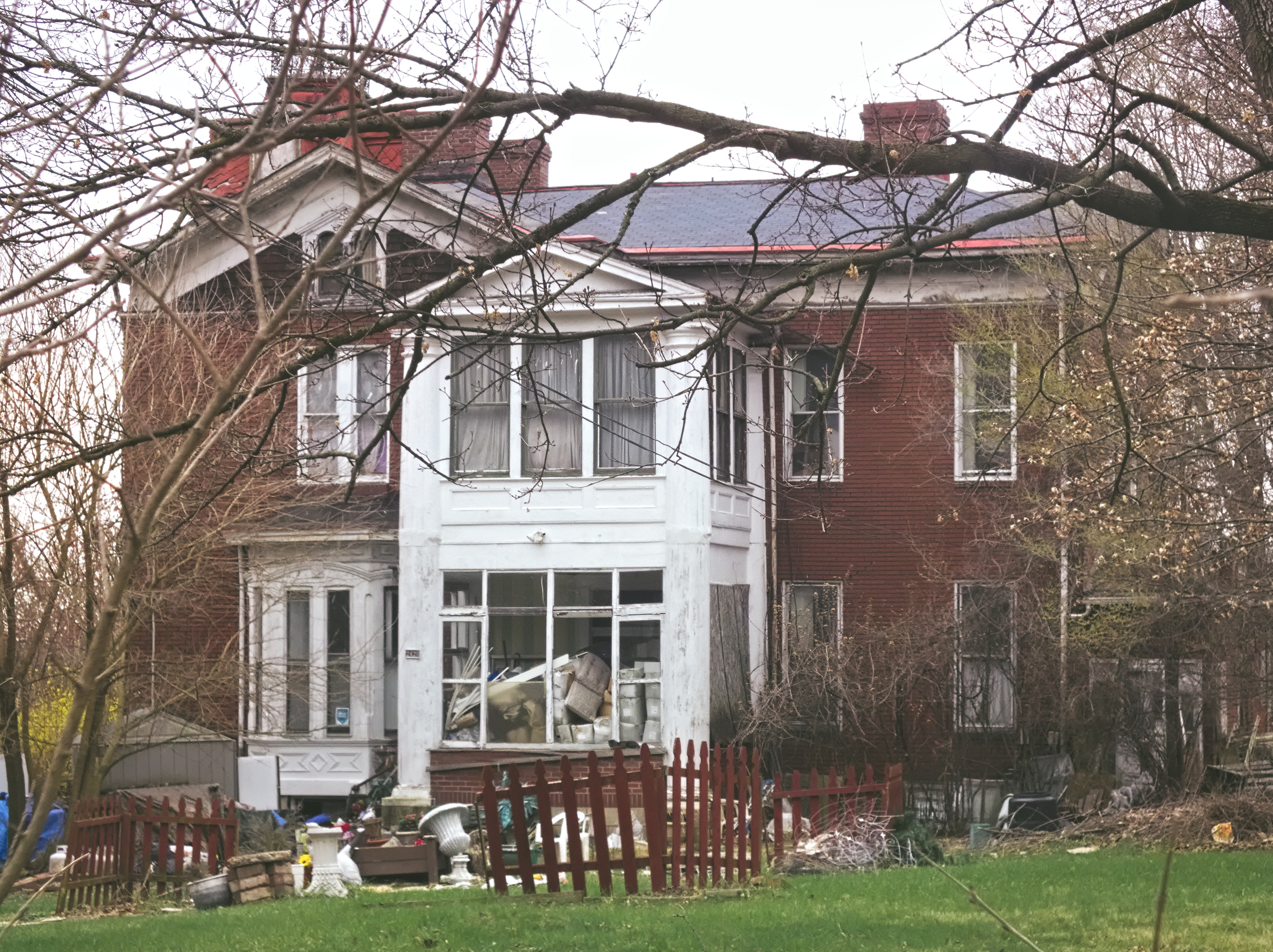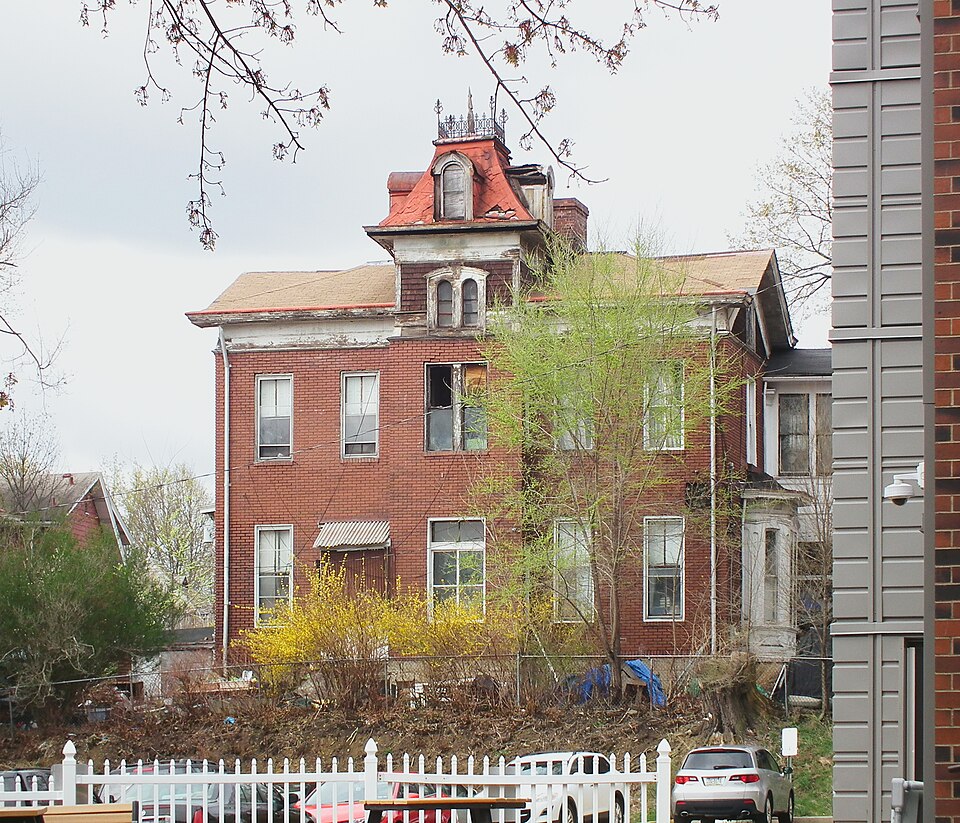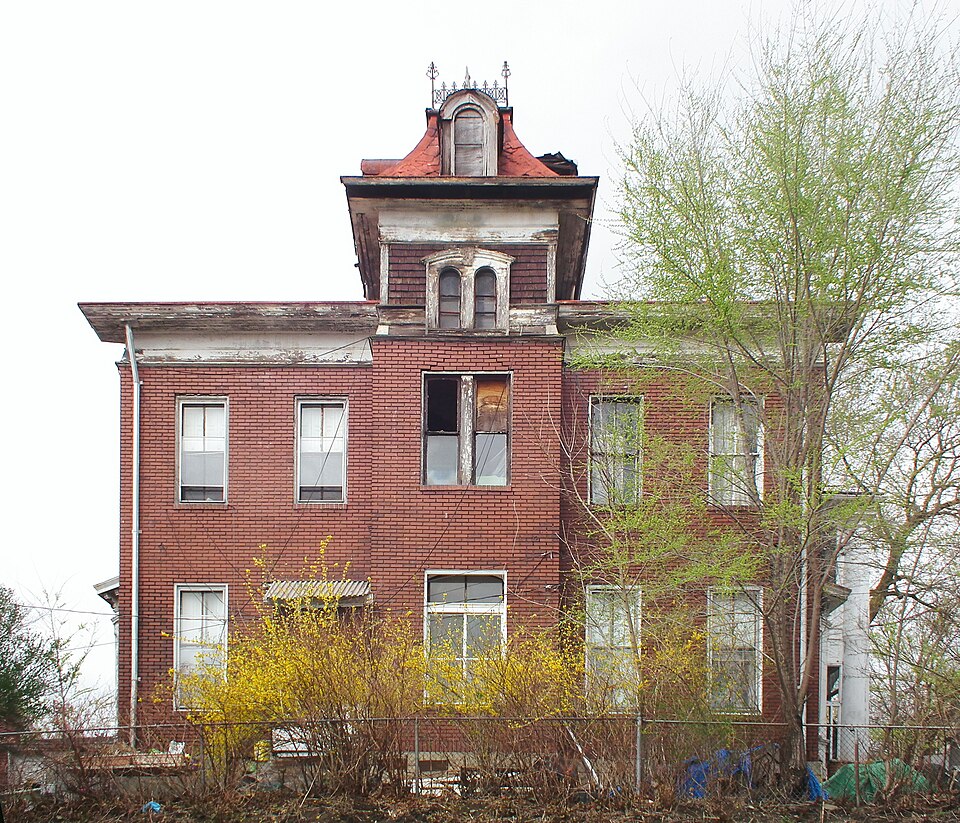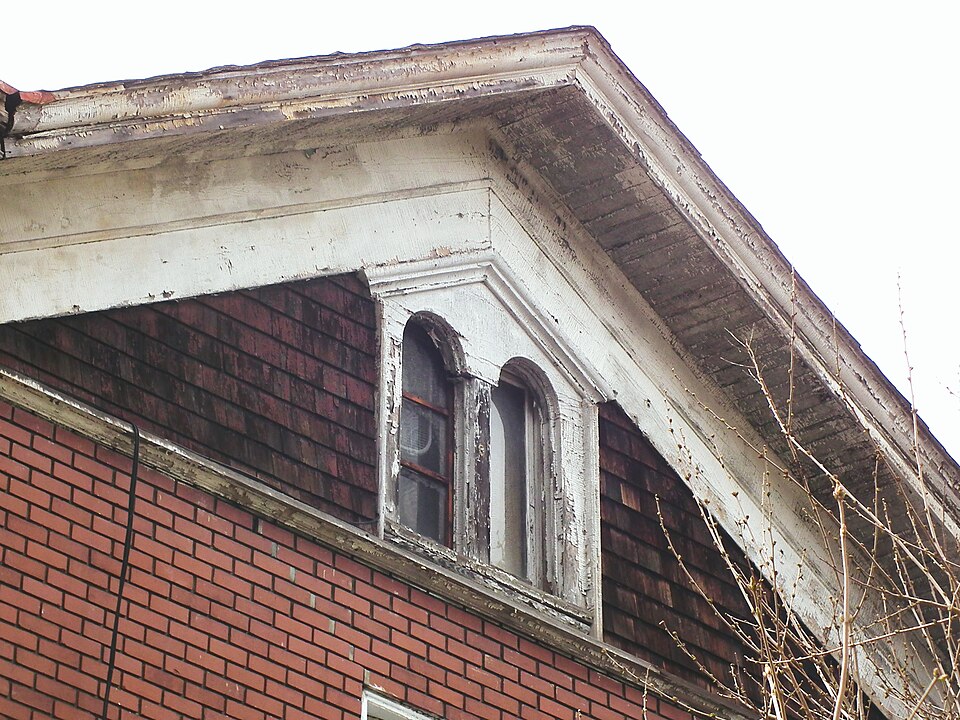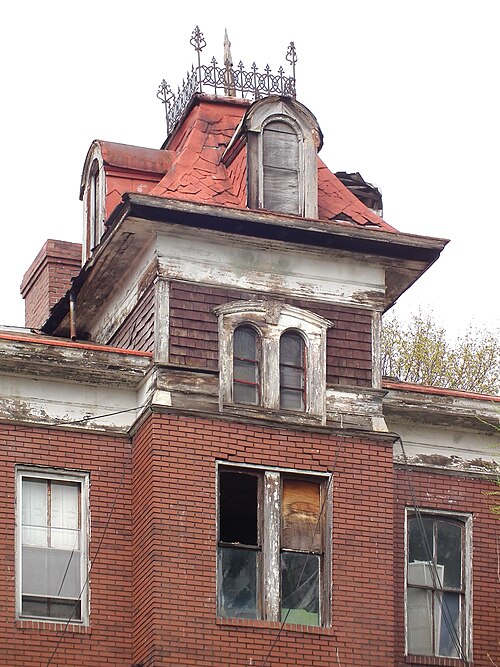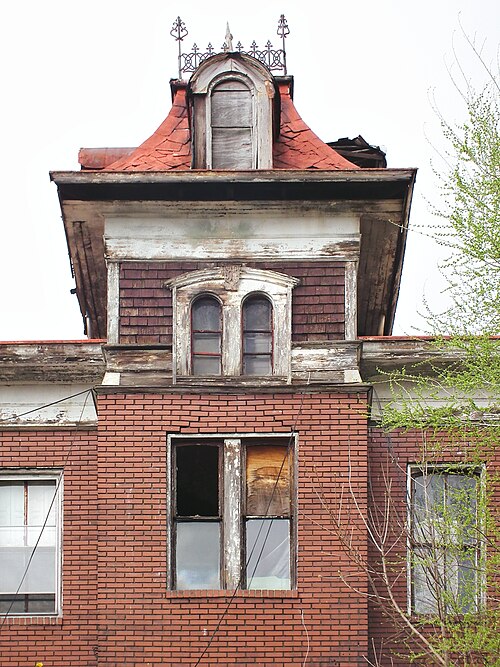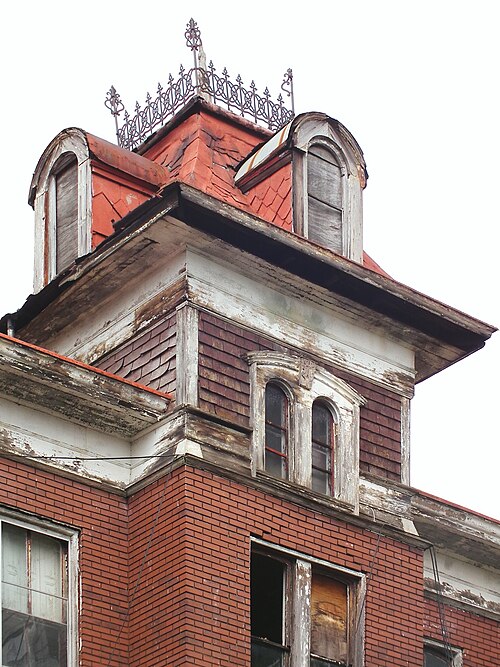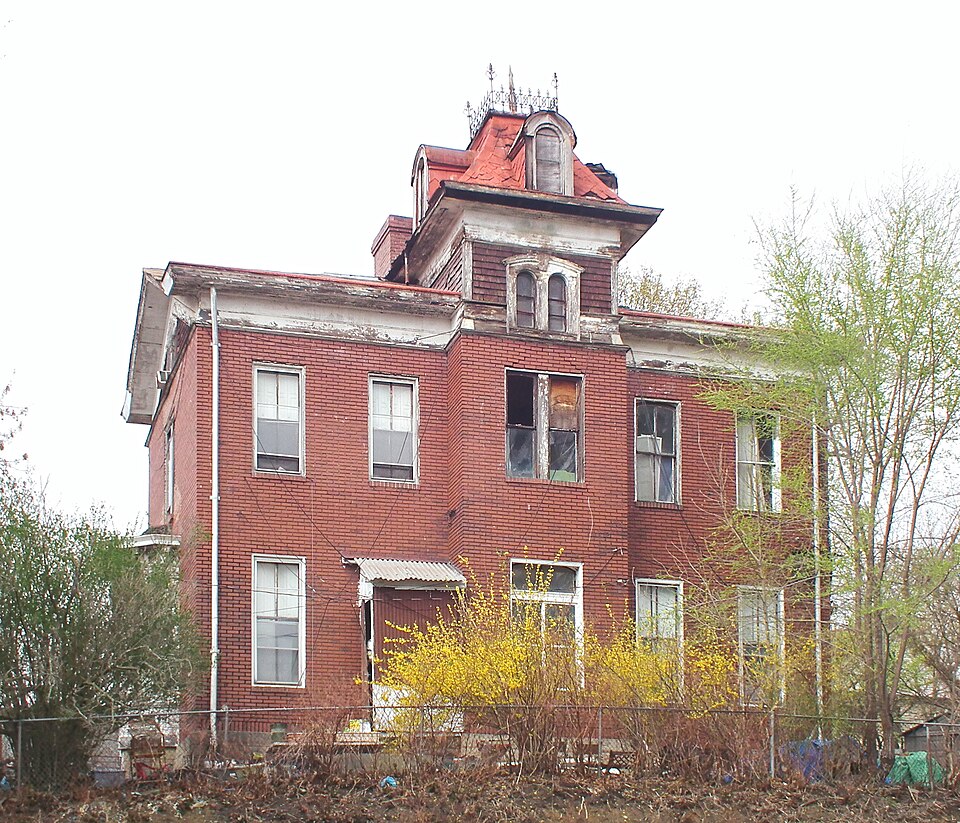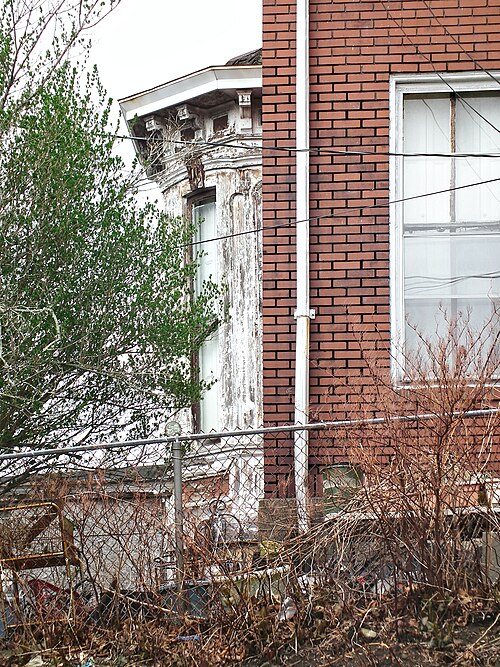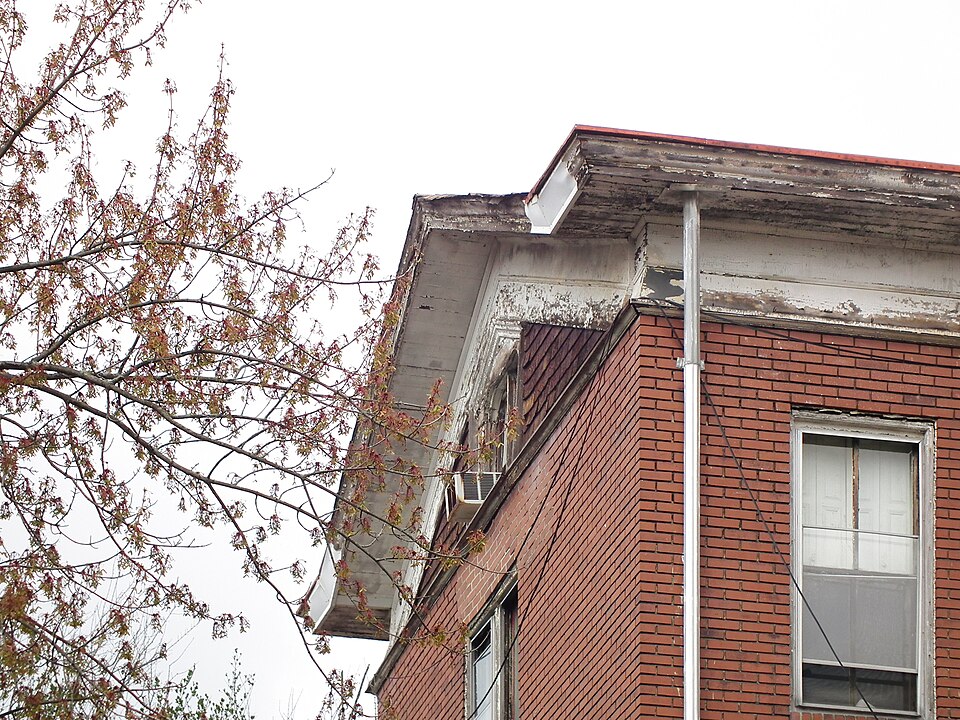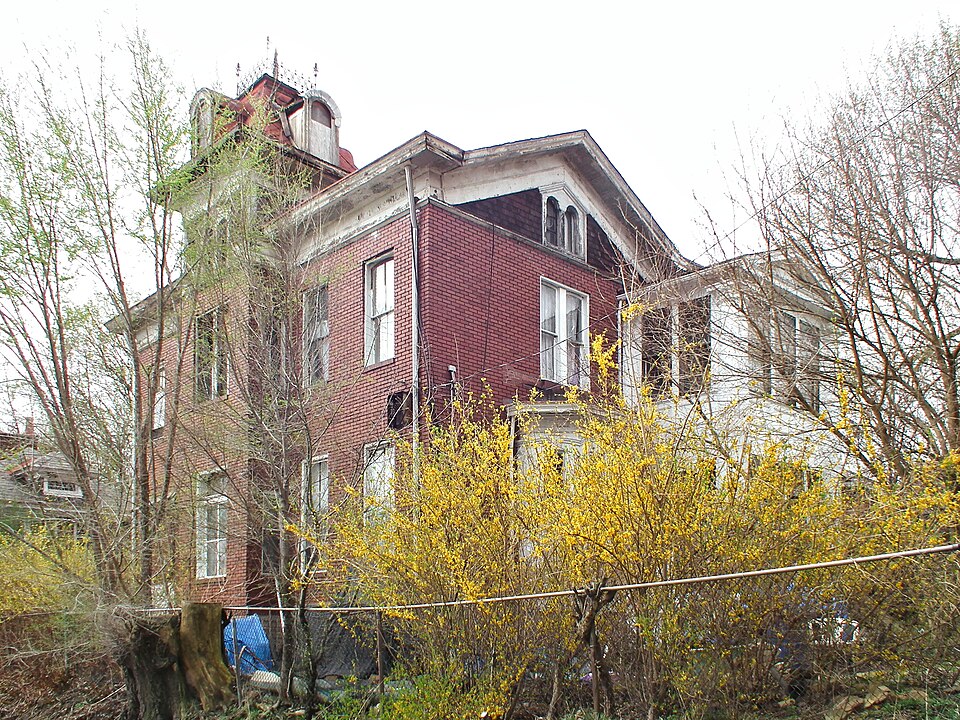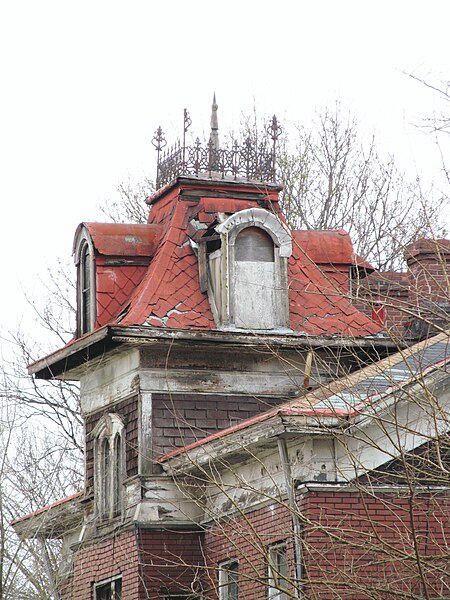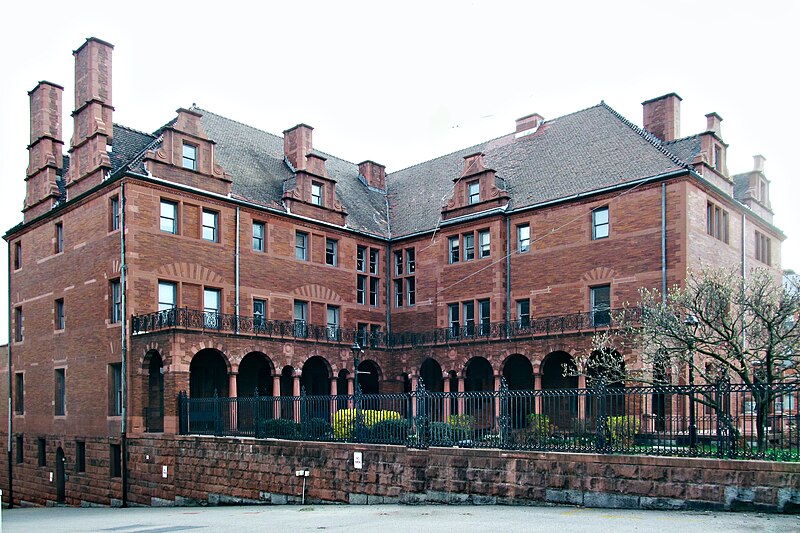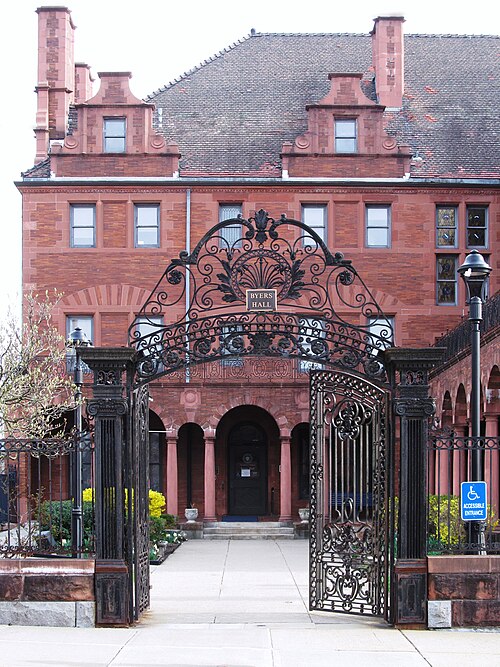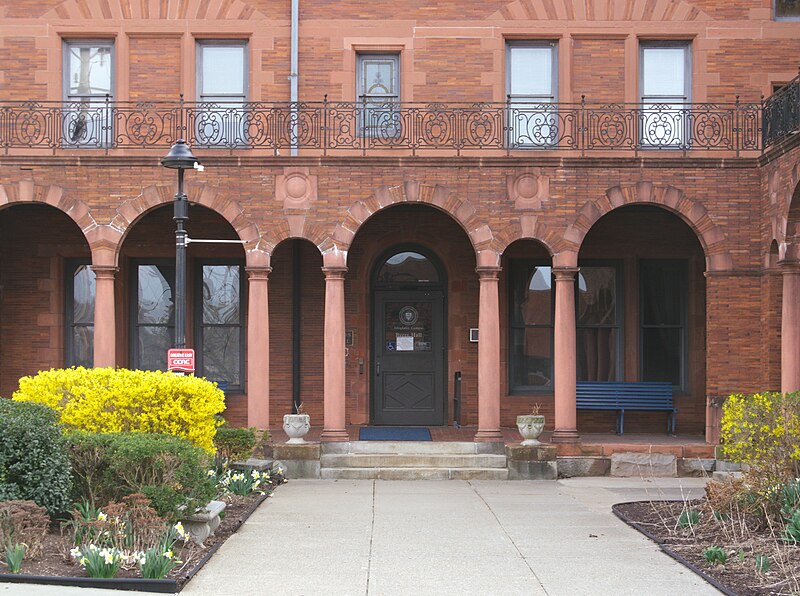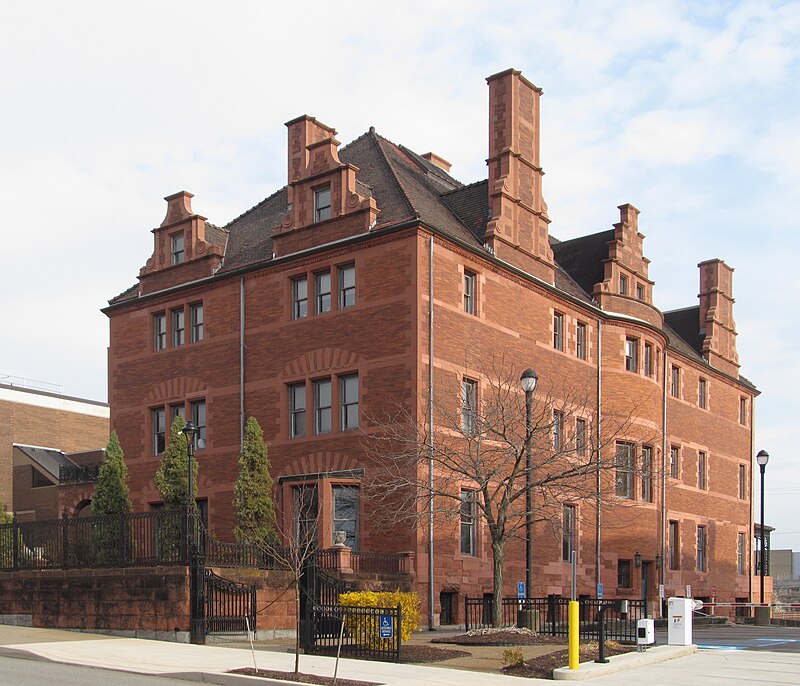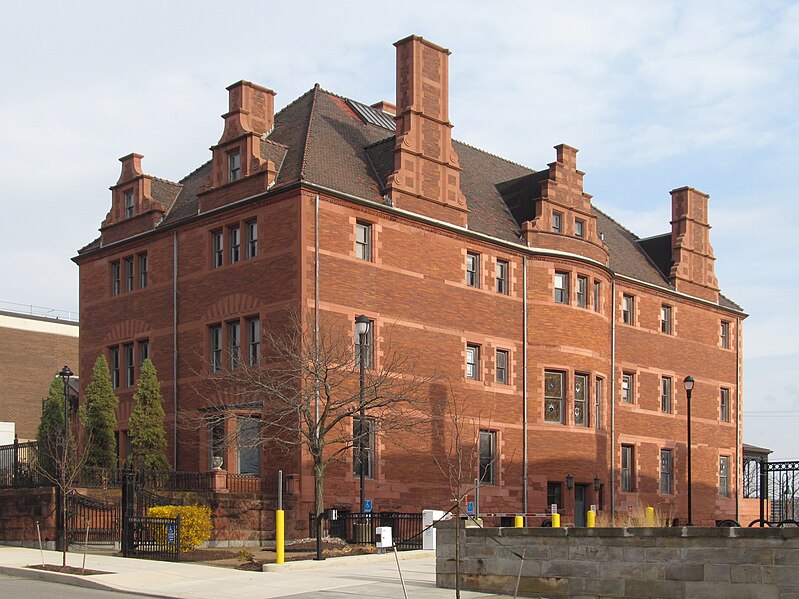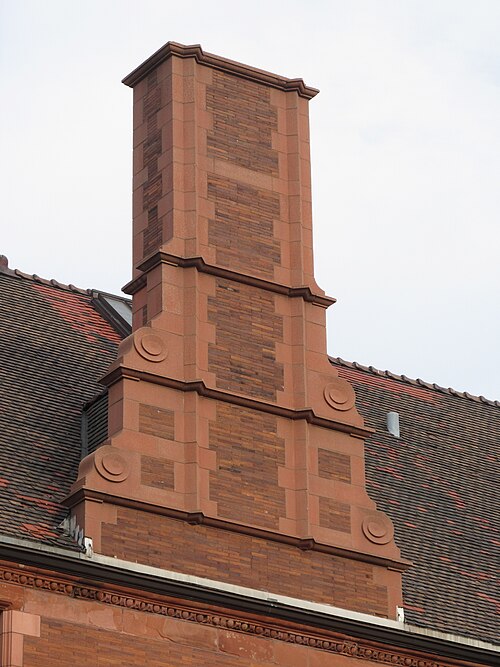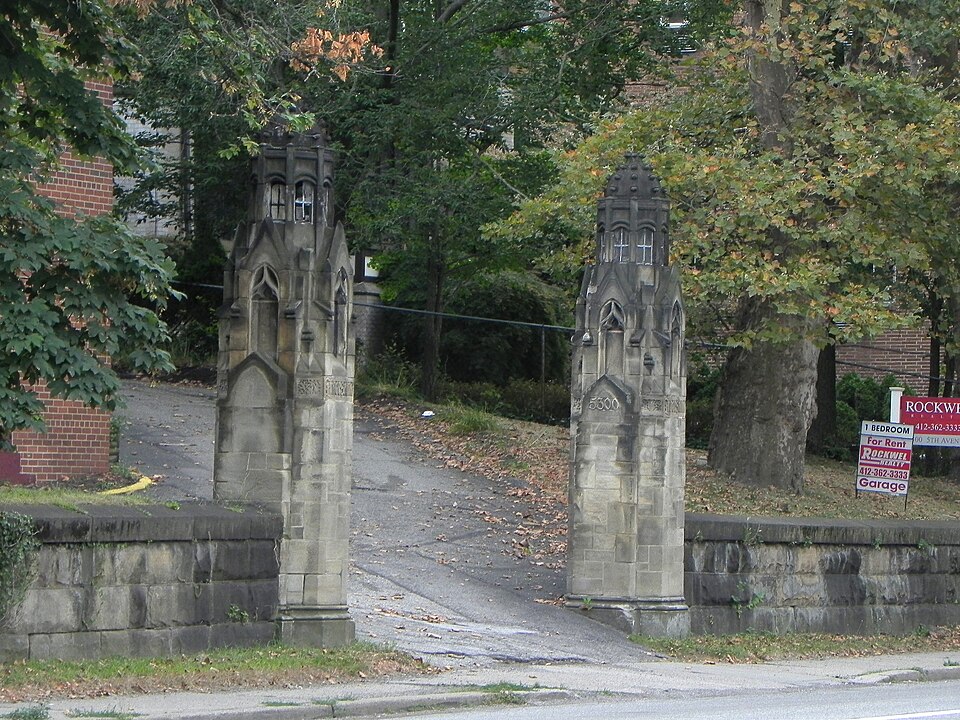
This is a strangely elaborate gateway for a postwar modernist apartment building. But anyone who knows the history of Fifth Avenue can guess that the gateway indicates where a grand mansion once stood on the Shadyside Millionaires’ Row. (Although city planning maps make Fifth Avenue the boundary between Shadyside and Squirrel Hill, traditionally both sides of the street were counted as “Shadyside.”)
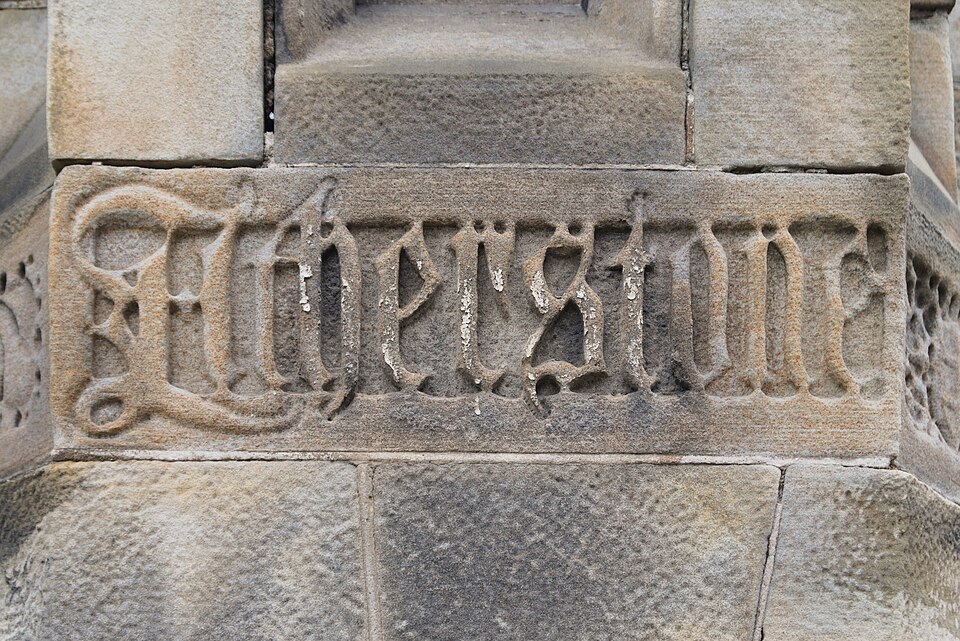
Atherstone was the mansion, or “castle” as locals would have said, of hardware and steel magnate John Bindley.
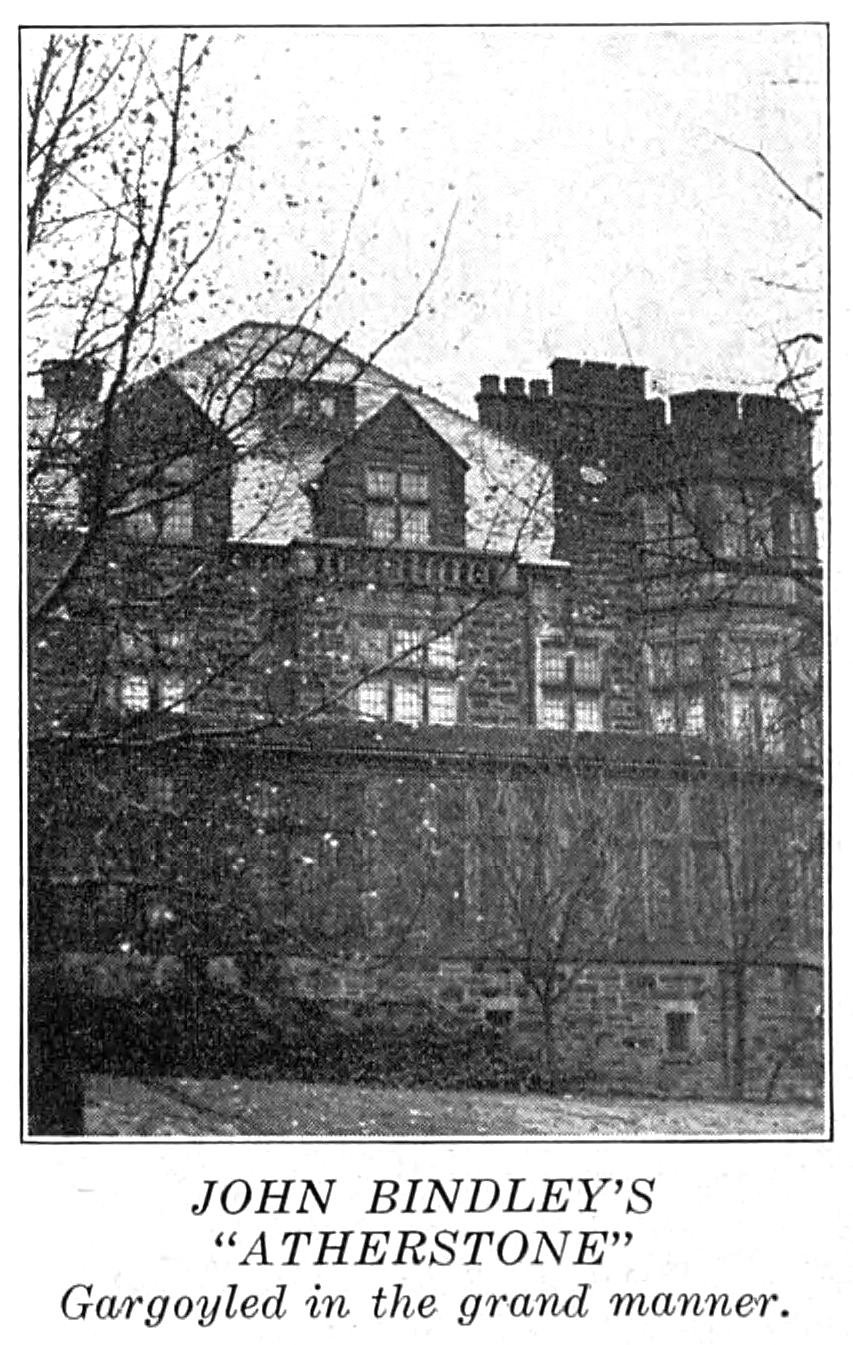
It was built in 1890, greatly expanded during the First World War (when these pillars were built), abandoned in 1929, and torn down in 1938.
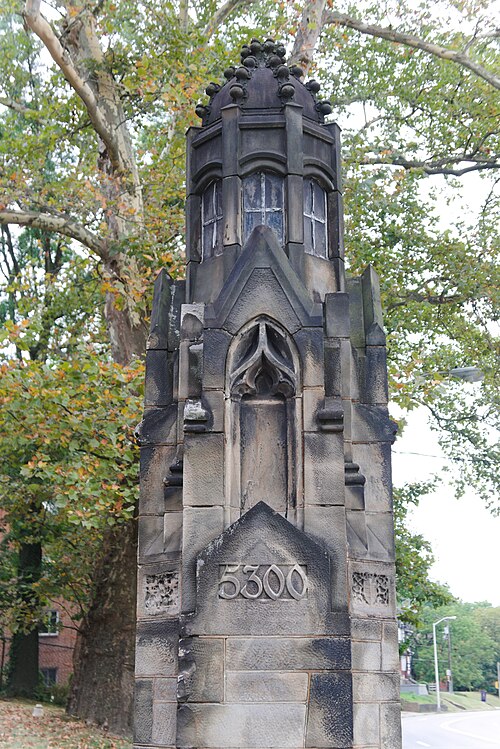
When the demolition began, the Bulletin Index, Pittsburgh’s high-toned society magazine, ran an article about the house that we reproduce below. The magazine had been infected by Timestyle with its horror of conjunctions and its quirky capitalization, but we trust our readers to interpret it without too much difficulty. The article gives us a picture of Depression-era Fifth Avenue at its lowest point, before the postwar housing boom filled many of the vacant estates with modern apartment buildings.
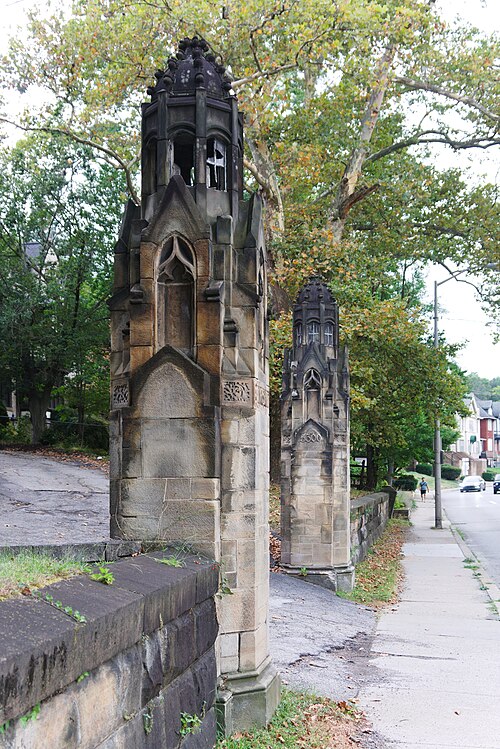
Atherstone
Forty years ago young Theodore Dreiser used to spend his evenings reading Balzac in the Allegheny Public Library, his Sunday afternoons walking out Fifth Avenue and back again. It was then one of the wealthiest, swankiest, most famous streets in the world. Dreiser gaped at the great mansions, marvelled years later in his autobiography that “even the lamp posts were better than in other parts of the city.” One of the most magnificent of the castles he gaped at was “Atherstone” (see cut).
Atherstone was a work of art, a baronial symbol of the great-spending paleo-industrial age of which William Randolph Hearst is the sole remaining big figure. Pittsburgher John Bindley, having grown rich with his Grant Street hardware store, richer as co-founder of the Pittsburgh Steel Co., built his four-story gargoyled castle (in 1890) in the grand manner, with crenellated turrets and 80 windows with leaded panes, named it after his ancestral home place in England. A widower with only two of his six children living, he travelled through Europe every year with his niece Elmina, brought back paintings, furniture, hand-carved panelling, marble mantel-pieces in the fashion of one who feels it a class privilege and duty to patronize the arts. Fixtures he had made to order in Manhattan to match the furniture he bought, for the Chippendale dining room, the Japanese room that was his favorite. During the prosperous war years Steelman Bindley spent $200,000 to remodel, add a wing to his castle. In an enlarged residence of 24 rooms, six baths, he installed an electric elevator, new copper drains, plumbing and kitchen equipment, added cupboard space that virtually equalled the room volume of an ordinary house, put two carved stone pillars at the driveway entrance, two huge solid oak doors at the entrance of the hand-carved oak panelled hall.
Four years later, at the age of 75, Steelman Bindley died. Atherstone and contents were left to Son Edward Houston Bindley, who died in 1929, to Daughter Adelaide Bindley Davidson, who closed up the castle, put most of the furniture (including the Japanese room) into one end of the Hoeveler warehouse, moved to California. Installed above the spacious six-room coachhouse in the rear was Niece Elmina McMillin, her four servants.
Many a great mansion Theodore Dreiser looked upon forty years ago now stands boarded up and weed-choked, many another has been torn down to leave great toothless gaps in swank Fifth Avenue. Fortnight ago came word that John Bindley’s Atherstone, scene of many and lavish entertainments, was to be given into the hands of home-wrecking Austin Givens, Inc. (who eleven years ago tore down John Bindley’s hardware store to make way for the Gulf Building). Last week the curious and buying public poked and peered through the cold bare rooms of Atherstone, being auctioned bit by bit. This week Wrecker Givens began to tear down, cart away.
—The Bulletin Index, December 8, 1938, p. 33.
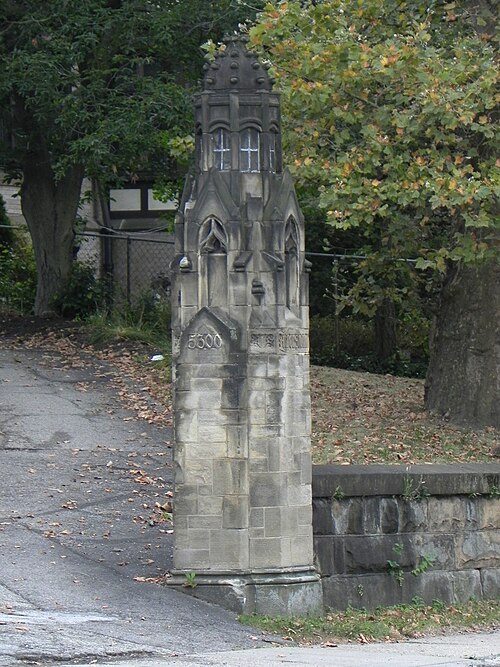
Comments








